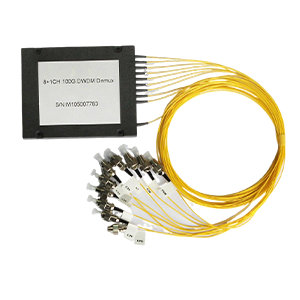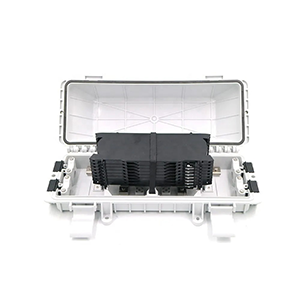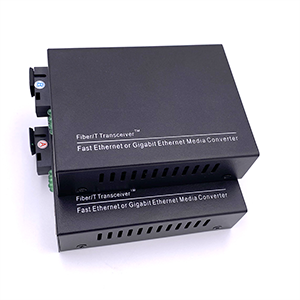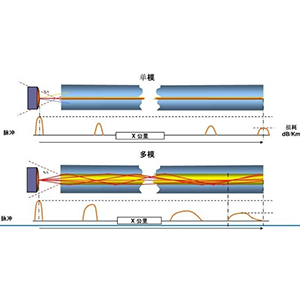I will deeply explore the working principle, advantages and application scenarios of Dense Wavelength Division Multiplexing (DWDM) in the network. If you want to know how to achieve high-capacity data transmission, build a safe and reliable network, and play a key role in long-distance transmission and data center interconnection, then this article will reveal the wonderful charm of DWDM to you.
DWDM is an advanced optical communication technology that achieves high-capacity and high-speed data transmission by transmitting multiple wavelengths (optical channels) simultaneously in optical fibers. DWDM plays an important role in modern networks, providing efficient and reliable solutions for long-distance communications across continents and oceans, data center interconnections, and wide area networks.
Basic principles of DWDM
DWDM (Dense Wavelength Division Multiplexing) is an optical communication technology that achieves high-capacity data transmission by transmitting densely arranged narrow-wavelength signals in optical fibers. The basic principles involve the key role of wavelength spacing and wavelength multiplexing.
The basic principle of DWDM is as follows: In the DWDM system, optical signals are divided into multiple different wavelengths (optical channels), and each wavelength corresponds to a different optical signal. These wavelengths can be very close, often within a few nanometers of each other. After the optical signal is modulated and amplified, it is transmitted through the optical fiber.
Wavelength spacing is an important parameter in DWDM. Wavelength separation is the distance between adjacent wavelengths, usually measured in nanometers. Common wavelength intervals are 100GHz and 50GHz. Smaller wavelength spacing means that wavelengths are closer together, allowing more wavelengths to be accommodated within a limited spectral range.
Wavelength multiplexing is another key concept in DWDM. Wavelength multiplexing refers to transmitting optical signals of multiple wavelengths in the same optical fiber at the same time. By using narrowband filters and optical multiplexers, optical signals of different wavelengths can be separated and combined. At the transmitting end, multiple optical signals are combined into a composite optical signal and then transmitted through optical fiber. At the receiving end, the composite optical signal is decomposed into optical signals of various wavelengths for demodulation and processing.
Wavelength spacing and wavelength multiplexing work together to enable DWDM technology to achieve high-capacity data transmission in optical fibers. By transmitting multiple wavelengths in an optical fiber, each wavelength carrying an independent optical signal, DWDM can significantly improve fiber utilization. Compared with traditional optical communication technology, DWDM can transmit more data in the same optical fiber, achieving higher bandwidth and transmission rate.
In summary, DWDM utilizes the principles of wavelength spacing and wavelength multiplexing to achieve high-capacity and high-efficiency data transmission by transmitting densely arranged narrow-wavelength signals in optical fibers. It provides large-capacity, high-speed solutions for modern communication systems and meets the rapidly growing data transmission needs.
DWDM network architecture overview
The typical architecture of a DWDM network includes the transmitter, transmission network and receiver. These parts and the key components in a DWDM network are introduced below.
-
Sender:
The transmitting end is the starting point of the DWDM network, which combines multiple optical signals into a composite optical signal through a wavelength division multiplexer (MUX). At the transmitting end, after the optical signal is modulated and amplified, it is converted into the corresponding wavelength using an optical transmitter, and the optical signals of multiple wavelengths are combined into a composite optical signal through a wavelength division multiplexer. The transmitting end may also include an optical amplifier to enhance the intensity of the optical signal.
-
Transmission network:
The transmission network is the optical fiber transmission medium in the DWDM network, which is responsible for transmitting the combined composite optical signal through the optical fiber. Since multiple wavelengths are used for transmission in DWDM networks, optical fibers can carry multiple independent optical signals at the same time to achieve high-capacity data transmission. During the transmission process of optical fiber, the signal may be enhanced by a fiber amplifier to overcome the signal attenuation caused by the transmission distance.
-
Receiver:
The receiving end is the end point of the DWDM network, which decomposes the composite optical signal into multiple independent wavelengths, demodulates and processes it. At the receiving end, the composite optical signal is decomposed into different wavelengths by a wave demultiplexer (DEMUX), and then converted into electrical signals by an optical receiver. After the electrical signal is demodulated and processed, independent optical signals carried by each wavelength can be obtained.
Key components:
-
Node:
Nodes in the DWDM network are key devices in the network and are used to implement signal forwarding and routing. Nodes may include optical amplifiers, optical switches, wavelength converters, etc. Nodes are interconnected through optical fibers to form a network topology and realize the transmission and exchange of optical signals.
-
Optical amplifier:
Optical amplifiers are important components in DWDM networks and are used to enhance the strength of optical signals. During the transmission of optical signals, the intensity of the optical signal will gradually weaken due to the attenuation of the optical fiber. Optical amplifiers can amplify optical signals and restore them to appropriate intensity to ensure the reliability and quality of signal transmission.
-
Wavelength division multiplexer (MUX):
A wavelength division multiplexer is a device used to combine optical signals of multiple wavelengths into a composite optical signal. It can distribute optical signals of different wavelengths to different channels through optical splitters and combine them into a composite optical signal for transmission.
-
Wave Decomposition Multiplexer (DEMUX):
A wavelength demultiplexer is a device used to decompose a composite optical signal into multiple independent wavelengths. It decomposes the composite optical signal into optical signals of various wavelengths through an optical splitter for demodulation and processing.
Through the above architecture and key components, the DWDM network can realize multi-wavelength high-capacity data transmission and provide flexible routing and forwarding functions during the transmission process. This makes DWDM technology an ideal choice to meet large-capacity, high-rate data transmission needs.
Advantages of DWDM in long-distance transmission
DWDM (Dense Wavelength Division Multiplexing) has multiple advantages in long-distance data transmission, which makes it an important technology for building high-capacity wide area networks and cross-continental communications. The following are the advantages of DWDM in long-distance transmission:
-
High bandwidth: DWDM technology transmits multiple wavelengths (optical channels) simultaneously, each wavelength carrying an independent optical signal. This multi-wavelength transmission mechanism greatly improves the transmission bandwidth. Compared with traditional optical communication technology, DWDM can transmit more data in the same optical fiber to achieve high-capacity data transmission. This gives DWDM significant advantages in long-distance transmission scenarios that meet large-capacity data requirements.
-
Low latency: The optical signal of DWDM technology is transmitted very fast in the optical fiber, almost close to the speed of light. Compared with electrical signal transmission, optical signal transmission has lower transmission delay. In long-distance transmission, low latency is very important for applications that are sensitive to network response speed, such as real-time applications, high-frequency transactions, and cloud computing. The low latency characteristics of DWDM make it ideal for meeting the needs of these applications.
-
Less signal attenuation: Optical signals will encounter signal attenuation during transmission in optical fibers, and attenuation will cause the signal strength to weaken. In DWDM technology, optical amplifiers are used to enhance signals and overcome signal attenuation. This enables DWDM to overcome the attenuation problem caused by optical fiber transmission in long-distance transmission and maintain the stability of signal quality and transmission distance.
Due to the above advantages, DWDM is important in building high-capacity wide area networks and cross-continental communications. In wide area networks, DWDM technology can transmit a large amount of data traffic through optical fibers to meet the needs of high-speed data transmission between different geographical locations. In cross-continental communications, DWDM can achieve high-capacity data transmission through reasonable wavelength planning and fiber transmission optimization to meet international large-scale data exchange and communication requirements.
In summary, DWDM has the advantages of high bandwidth, low latency and less signal attenuation in long-distance transmission. These characteristics make DWDM an ideal choice for building high-capacity wide area networks and cross-continental communications to meet the growing demand for data transmission.
Application of DWDM in data center interconnection
DWDM (Dense Wavelength Division Multiplexing) has important applications in data center interconnection. The following are the roles and advantages of DWDM in data center interconnection:
-
High-density connectivity: Data centers often require large amounts of bandwidth and connectivity to support fast data transfers between various applications and services. DWDM technology can transmit multiple wavelengths (optical channels) simultaneously on the same optical fiber, with each wavelength carrying an independent optical signal. This high-density connection capability allows data centers to implement large-scale data exchange through DWDM to meet the growing data transmission needs.
-
Flexibility: Data center environments require flexible interconnect capabilities to adapt to changing business needs and traffic patterns. DWDM technology enables flexible routing and connection configurations through wavelength division multiplexers (MUX) and wavelength decomposition multiplexers (DEMUX). Administrators can adjust wavelength allocation and routing as needed to meet data traffic requirements between different applications. This flexibility enables data centers to quickly respond to business needs and provide efficient data interconnection services.
-
Scalability: As data center size and business needs grow, scalable interconnect solutions are required. DWDM technology can easily expand and increase the connection capacity between data centers. By increasing the number of optical channels or using higher-capacity optical fiber equipment, data center interconnection bandwidth can be rapidly expanded to meet the growing data transmission needs.
In supporting cloud computing, big data transmission and virtualized environments, DWDM plays a key role in data center interconnection:
-
Cloud computing: Cloud computing environment requires high-speed and reliable data transmission to support functions such as virtual machine migration and resource pool sharing. DWDM provides high-bandwidth, low-latency optical fiber transmission, allowing data centers to achieve fast and reliable cloud service delivery.
-
Big data transmission: Big data applications require the transmission of large amounts of data between data centers for analysis, processing and storage. DWDM’s high-density connections and scalability allow large-scale data to be efficiently transmitted between data centers, providing excellent performance and throughput.
-
Virtualization environment: Virtualization technology is widely used in data centers and can virtualize physical resources into virtual machine instances. DWDM supports high-speed communication and migration between virtual machines by providing high-bandwidth and low-latency interconnections, improving the performance and flexibility of virtualized environments.
To sum up, DWDM has the advantages of high-density connections, flexibility and scalability in data center interconnection. It plays a key role in supporting cloud computing, big data transmission and virtualization environments, meeting the data center’s high-speed, reliable, and scalable interconnection needs.
Security and reliability of DWDM
DWDM (Dense Wavelength Division Multiplexing) has some applications and advantages in network security and data reliability. The following is a discussion about the security and reliability of DWDM:
Cybersecurity and data protection: DWDM itself does not directly provide network security and data protection functions, but can be used in conjunction with other security measures to ensure the confidentiality and integrity of transmitted data. In DWDM networks, common security measures include:
-
Encryption technology: By encrypting data before signal transmission, data can be protected from unauthorized access during transmission. Encryption technology can be applied to optical signals in DWDM networks to ensure that only authorized recipients can decrypt and read the data. This can effectively prevent data from being eavesdropped and tampered with.
-
Network isolation: DWDM networks can use physical isolation and logical segmentation to enhance network security. By isolating the data flows of different users or different applications on different optical wavelengths or optical channels, cross-interference and unauthorized access of data can be prevented.
-
Access control: By controlling access to the DWDM network, such as using authentication and authorization mechanisms, you can limit access to the network and ensure that only authorized users can access and manage network devices.
-
Network fault recovery and business continuity: DWDM has some advantages in network fault recovery and business continuity:
-
Redundant design: DWDM networks usually adopt redundant designs, including redundant optical fiber paths, redundant optical modules and redundant optical amplifiers. This redundant design can improve the reliability and robustness of the network. When a certain path or device fails, it can automatically switch to the redundant path or device to ensure the continuity and reliability of data transmission.
-
Fast fault detection and recovery: DWDM networks are usually equipped with fault detection and recovery mechanisms, which can quickly detect faults in the network and automatically perform failover and recovery. This can reduce the impact of failures on the network and services, and improve network availability and continuity.
-
Network monitoring and management: DWDM networks usually have powerful network monitoring and management functions, which can monitor network performance, health status and traffic conditions in real time. thissuch monitoring and management capabilities can help detect potential problems in time and take appropriate measures for troubleshooting and recovery to ensure network reliability and business continuity.
-
To sum up, DWDM can ensure the confidentiality and integrity of data through encryption technology, network isolation and access control measures in terms of network security. In terms of network fault recovery and business continuity, DWDM provides reliable network transmission and business continuity guarantees through its advantages such as redundant design, rapid fault detection and recovery, and network monitoring and management.
Summary:
Thank you for reading this blog. We have an in-depth discussion of the working principle, advantages and application scenarios of Dense Wavelength Division Multiplexing (DWDM) in the network. DWDM enables high-capacity data transmission by transmitting densely arranged narrow-wavelength signals in optical fibers, for which wavelength spacing and wavelength multiplexing are key factors.
We provide advanced DWDM solutions and are committed to building efficient, secure and reliable networks for you. When you choose our products, you get the guarantee of high-capacity data transmission, flexibility and reliability, helping your business achieve greater success.
DWDM FAQ
DWDM is used to increase the capacity and efficiency of optical fiber networks. It allows for the simultaneous transmission of multiple optical signals at different wavelengths over a single fiber, significantly expanding the data-carrying capacity of the network infrastructure. DWDM enables long-haul and high-speed communication, reduces the need for additional fiber installations, and lowers overall network costs.
The five main components of a DWDM system are:
Transmitters: Laser sources that generate optical signals at different wavelengths.
Receivers: Devices that receive and interpret the demultiplexed signals.
Multiplexers: Combine multiple optical signals onto a single fiber by assigning different wavelengths to each signal.
Demultiplexers: Devices that separate the combined signals into their respective wavelengths for further processing.
Fiber optic cables: Transmission medium that carries the optical signals over long distances.
The number of channels in a DWDM system can vary depending on the specific implementation and equipment used. However, modern DWDM systems can support hundreds of channels or more. Typical DWDM systems may have 40, 80, or even 160 channels, each operating at a different wavelength.
A DWDM mux (multiplexer) is a device that combines multiple individual optical signals at different wavelengths onto a single optical fiber. It takes the individual signals from different sources and multiplexes them into a composite signal for transmission. The mux assigns different wavelengths to each signal to ensure they can be separated at the receiving end.
The OSNR in a DWDM system can be calculated by measuring the power of the signal (received optical power) and the power of the noise (unwanted optical noise) present in the system. The OSNR can be determined by comparing the power of the signal to the power of the noise, typically measured in decibels (dB).
DWDM systems can be both active and passive, depending on the specific components and network architecture. Passive DWDM systems primarily use passive components like multiplexers and demultiplexers to combine and separate optical signals, requiring minimal or no power. Active DWDM systems utilize additional components such as optical amplifiers to boost the signal strength over long distances, requiring power for their operation.





